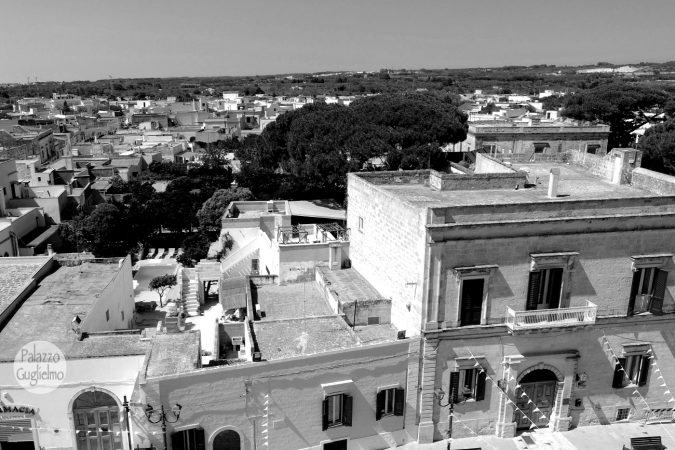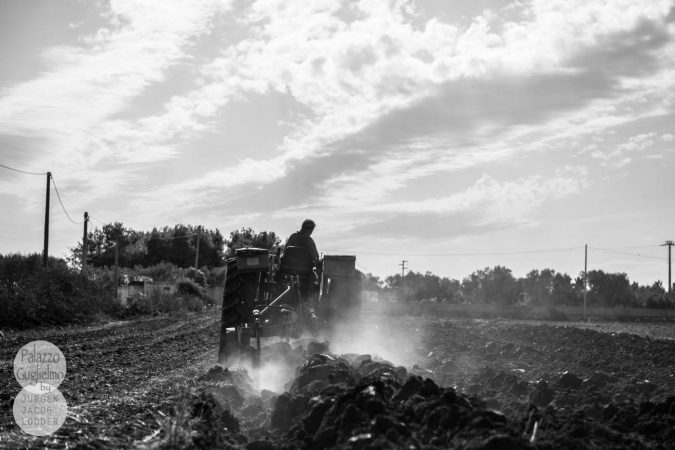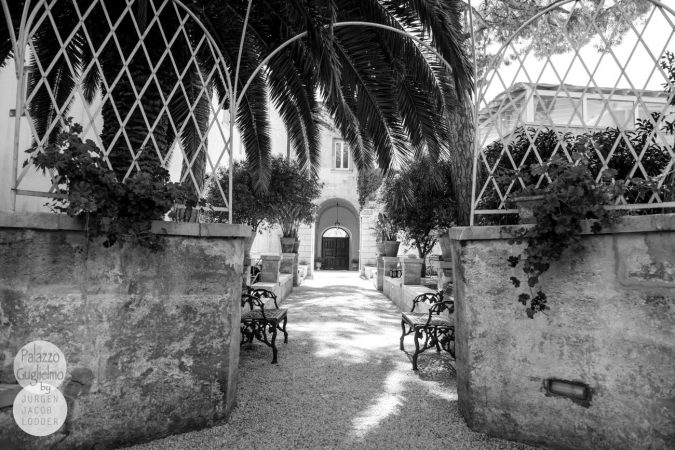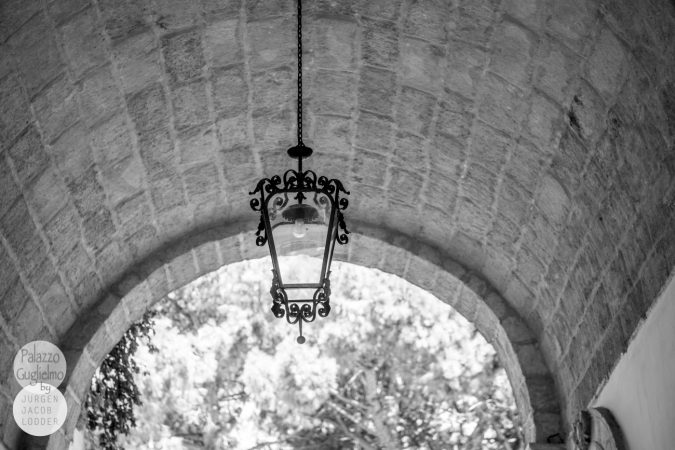There is no clear evidence of when Palazzo Guglielmo was built. It seems that the Rossi barons – the last feudal lords before the abolition of the feudal regime in 1806 – were its first owners. During the XVIII century, the ownership of the Palazzo reverted to the Guglielmo family who kept the property till the first years of XXI century. Don Pippi Guglielmo inherited from his father a huge amount of properties, scattered all over the Salento area, including fields and many kinds of cattle and flock. Thank to his wise administration of the legacy, the Palazzo became the economic and social centre of the village.
In the courtyard of Palazzo Guglielmo, the harvests from all the family properties were stored: at the beginning they were mainly corn, oil and wine. The ground floor was used as an office while the warehouses were used to store the olive oil, the wine and the food coming from the fields. The rooms, where our guests now stay, used to be the kitchen and the laundry. Here, the housekeepers used to wash the laundry with hot water and ashes or used to prepare the cheese using fresh milk. This floor was crowded because of housekeepers, workers and farmers that from the early morning used to work in the garden or in the lounge.
Men and women were involved in different activities, among which the maintenance of the building and of the warehouses. The present breakfast room was originally a horse stable, while the swimming pool area was full of chickens and rabbits. Granaries and storerooms were located in the cellar under the courtyard and all the rooms.
The importance of Palazzo Guglielmo grew during the years, especially after II World War, when the family started to deal with politics and administration. In 1948, Don Pippi became mayor of the village. During the 50’s, the tobacco was introduced so that the building was enlarged until reaching the present shape so as to work the new product. Some new rooms were built on the eastern side of the building including the tobacco warehouse (located in Via Napoli), where for many years the local women used to work. During the same period, the bridge on Via Napoli was built. This bridge was a private passage between the main building and the tobacco and wine warehouses.




